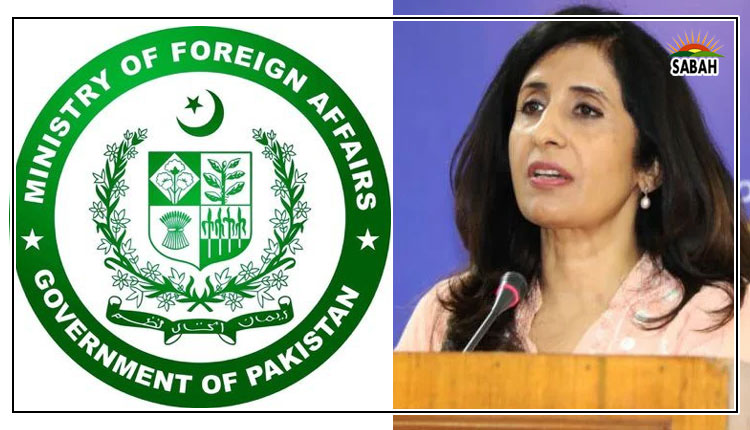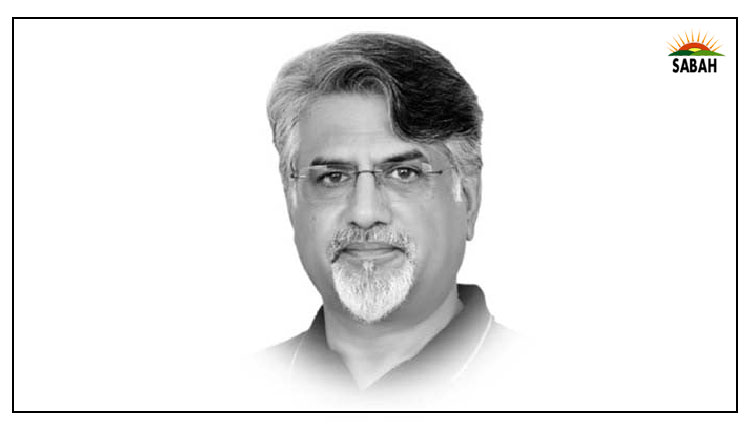Dozens of major terrorist groups operating from Afghanistan…Masud Khan
After the US withdrawal, Afghanistan has become a hub of terrorist organisations capable of attacking Europe, Asia and the US, thereby threating regional and international peace.
Afghanistan has a history of creating problems for Pakistan since 1947 by raising the so-called issue of Pashtunistan and Durand Line. All the insurgencies and sub-nationalist movements in Pakistan are supported and hosted by Afghanistan. India used Afghanistan as a second front to destabilise Pakistan in close coordination with former intelligence agencies of Afghanistan, namely KHAD and NDS. During the tenure of Karzai and Ghani, India had established 66 terrorist camps in Afghanistan for TTP, BLA and BLF.
Pakistan has paid a huge price of the US-led war on terror that saw over 80,000 Pakistanis martyred. Nothing has changed after the takeover of Afghanistan by Taliban. Before the Afghan Taliban takeover of Afghanistan, there was 86 per cent reduction in terrorist incidents in Pakistan, but soon after the takeover a surge of 70 per cent was witnessed. The Taliban government has not only provided safe havens to terrorists but also armed them with the weapons left over by the US. The Taliban takeover has also facilitated the re-emergence and strengthening of terrorist groups other than the TTP.
As many as 23 major terrorist groups are operating from Afghanistan threatening some 53 countries. Seventeen of these groups focus Pakistan. The terrorist group that benefitted the most after the return of Taliban to power is TTP, as thousands of terrorists were released from Afghan jails. TTP now has 42 factions operating under its umbrella and has been further strengthened after its alliance with Hafiz Gul Bahadur Group. TTP, having a total strength of around 6,000, is being used by India and Afghanistan as a proxy to destabilise Pakistan through attacks on security forces, CPEC projects and Chinese nationals. There has been a surge of terrorist attacks by TTP in K-P and Balochistan.
US CENCOM chief General Michael Kurilla told the US Senate Armed Services Committee this year that TTP is a significant threat to the stability of Pakistan. The UN Analytical Support and Sanction Monitoring team in a report vindicated Pakistans stance on TTP terrorist activities in Pakistan. According to a report, Afghan Taliban are also joining TTP which is evident from the fact that 66 Afghan nationals were killed by security forces in Pakistan; and in the 24 suicide attacks carried out in Pakistan, 16 were involved Afghans. Today, TTP is more organised, trained and armed with latest US weapons, including night vision devices.
The second terrorist group is Islamic State of Khorasan (IS-K). Formed in 2015, IS-K mostly comprises disgruntled elements of Afghan Taliban, TTP, Arabs and Central Asians. IS-K wants to establish a Muslim Caliphate across Pakistan, Afghanistan, Turkmenistan, Tajikistan, Uzbekistan and Iran. With an estimated strength of 1,500 to 3,000 and based in Kabul, Nuristan, Nangarhar and Kunnar (Eastern Afghanistan), IS-K is struggling to establish its foothold in Central Asian Republics. According to the US CENTCOM chief, IS-K can do external operations against the US or Western interest abroad in 6 months with little or no warning. The terrorist group is involved in some of the deadliest attacks in Pakistan, Afghanistan, Iran, Turkey, and more recently in Moscow at a concert hall.
The third terror group is Al Qaeda Core and Al-Qaeda in Sub-continent (AQIS). Created in 1988, Al-Qaeda settled in Afghanistan after the Taliban takeover. The group provides recruitment, training and ideological support for all terrorist groups, including the TTP. Last year it planned and facilitated TTP attacks on Pakistan border posts in Chitral. It recently came back to limelight when its leader, Ayman al-Zawahiri, was killed on 31 July 2022 in a US drone attack. Al-Qaeda Core leadership is in Afghanistan and is mobilising its operational capability. According to a UN report, Al-Qaeda has established 8 new training camps in Ghazni, Laghman, Parvan and Urzugan provinces of Afghanistan. The group is also training would-be suicide bombers of TTP in Kunnar under Hakeem Al Misri. According to a London-based threat analysis firm, Al-Qaeda is controlling smuggling routes along with Afghan Taliban and earning billions of dollars.
The fourth in the list is Eastern Turkistan Islamic Moment (ETIM) which is using Afghan soil to launch cross-border attacks against China. The Afghan Taliban support the Uyghur separatist group which is challenging Chinese security interest in Xinjiang. Since the group cannot attack inside China, it tries to attack Chinese interest in Pakistan along with TTP. According to media reports, the group is part of the Dasu attack claimed by TTP in 2021. Recently, ETIM has shifted its base from Badakhshan to Baghlan province, expanding its operational reach. Al Qaeda is also facilitating ETIM through training and ideological brainwashing.
The fifth terror group is Islamic Movement of Uzbekistan (IMU), founded in 1998 by former Russian soldier Jumma and Tahir Yuldashev. The groups objective is to overthrow the secular government in Uzbekistan impose sharia. When the government launched a crackdown on their movement, it shifted to Afghanistan. The IMU comprises recruits from Uzbekistan, Afghanistan, Kyrgyz Republic as well as Chechans and Uyghurs of Xinjiang. IMU was involved in the attack on Karachi international airport in 2014 which killed 39 people.
Tehrik Taliban Tajkistan (TTT) is the sixth on the list. Having emerged in July 2022 in Afghanistans Badkhshan province, TTT is affiliated with Al-Qaeda and has allegiance to Afghan Taliban. The terrorist outfit is getting recruits from Tajikistan and other Central Asian Republics. It is also planning to overthrow the secular government of Tajkistan and impose sharia there.
The seventh terrorist group is Baloch Raji Ajoi Sangar (BRAS) which includes BLA BLF, BRG and Majeed Bridge. Later, Indian spy agency RAW created a consortium of terror groups by adding TTP in BRAS. TTP is also providing training to suicide bombers of Majeed Bridge. There are also reports of Majeed Brigade having allied with IS-K.
The Government of Pakistan has shared irrefutable evidence of the terror groups operating from Afghanistans safe havens to UNSC and international community. Pakistan showed enormous restraints for two years before launching strikes inside Afghanistan, recently. The Afghan government must ensure that there are no safe havens for TTP and other terror groups. After 9/11, the US attacked Afghanistan with the objective of eliminating terrorism from the world, but now it seems that the US and the world have failed to achieve this objective.
Courtesy The Express Tribune












